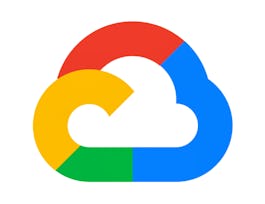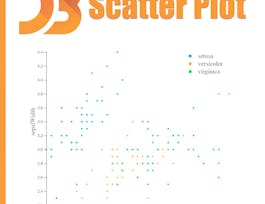Within this course, you’ll learn about how PostgreSQL creates and uses inverted indexes for JSON and natural language content. We will use various sources of data for our databases, including access to an online API and spidering its data and storing the data in a JSON column in PostgreSQL. Students will explore how full-text inverted indexes are structured. Students will build their own inverted indexes and then make use of PostgreSQL built-in capabilities to support full-text indexes.


JSON and Natural Language Processing in PostgreSQL
This course is part of PostgreSQL for Everybody Specialization
Taught in English
Some content may not be translated

Instructor: Charles Russell Severance
7,794 already enrolled
Included with 
Course
(122 reviews)
Recommended experience
What you'll learn
Compare Python, PostgreSQL, and JSON.
Index and retrieve natural language text and JSON data; access API data and store it in a database.
Create a GIN-based text[] reverse index and ts_vector index; build a search engine in PostgreSQL.
Skills you'll gain
Details to know

Add to your LinkedIn profile
2 quizzes
Course
(122 reviews)
Recommended experience
See how employees at top companies are mastering in-demand skills

Build your subject-matter expertise
- Learn new concepts from industry experts
- Gain a foundational understanding of a subject or tool
- Develop job-relevant skills with hands-on projects
- Earn a shareable career certificate


Earn a career certificate
Add this credential to your LinkedIn profile, resume, or CV
Share it on social media and in your performance review

There are 4 modules in this course
In this first week, we introduce you to the course and its main focus: text and JSON.
What's included
9 videos5 readings4 app items
In this week, we'll look at GIN-based inverted indexes and ts_vector() and ts_query() functions.
What's included
7 videos1 reading1 quiz2 app items
This week is all about connecting and comparing Python and PostgreSQL.
What's included
10 videos2 readings2 app items
In this final week, we'll focus primarily on JSON and its functions.
What's included
11 videos2 readings1 quiz1 app item
Instructor

Offered by
Recommended if you're interested in Software Development

University of Michigan

Google Cloud

Coursera Project Network

University of Michigan
Why people choose Coursera for their career




Learner reviews
Showing 3 of 122
122 reviews
- 5 stars
76.22%
- 4 stars
13.93%
- 3 stars
5.73%
- 2 stars
0.81%
- 1 star
3.27%
New to Software Development? Start here.

Open new doors with Coursera Plus
Unlimited access to 7,000+ world-class courses, hands-on projects, and job-ready certificate programs - all included in your subscription
Advance your career with an online degree
Earn a degree from world-class universities - 100% online
Join over 3,400 global companies that choose Coursera for Business
Upskill your employees to excel in the digital economy
Frequently asked questions
Access to lectures and assignments depends on your type of enrollment. If you take a course in audit mode, you will be able to see most course materials for free. To access graded assignments and to earn a Certificate, you will need to purchase the Certificate experience, during or after your audit. If you don't see the audit option:
The course may not offer an audit option. You can try a Free Trial instead, or apply for Financial Aid.
The course may offer 'Full Course, No Certificate' instead. This option lets you see all course materials, submit required assessments, and get a final grade. This also means that you will not be able to purchase a Certificate experience.
When you enroll in the course, you get access to all of the courses in the Specialization, and you earn a certificate when you complete the work. Your electronic Certificate will be added to your Accomplishments page - from there, you can print your Certificate or add it to your LinkedIn profile. If you only want to read and view the course content, you can audit the course for free.
If you subscribed, you get a 7-day free trial during which you can cancel at no penalty. After that, we don’t give refunds, but you can cancel your subscription at any time. See our full refund policy.

